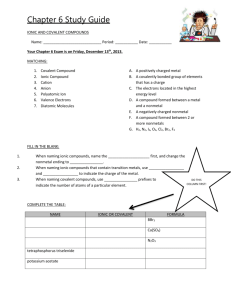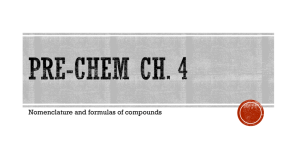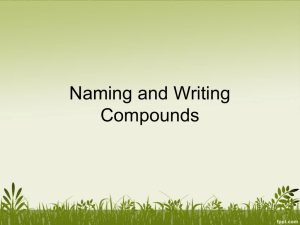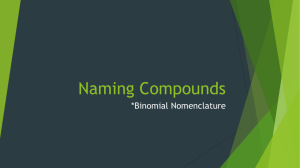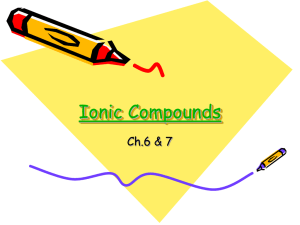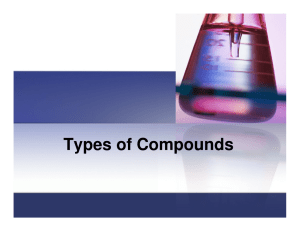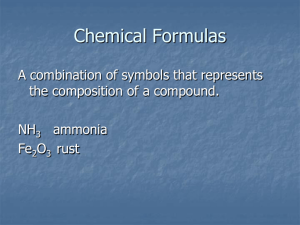CH 115 Fall 2014Worksheet 11 How do you distinguish an ionic
advertisement
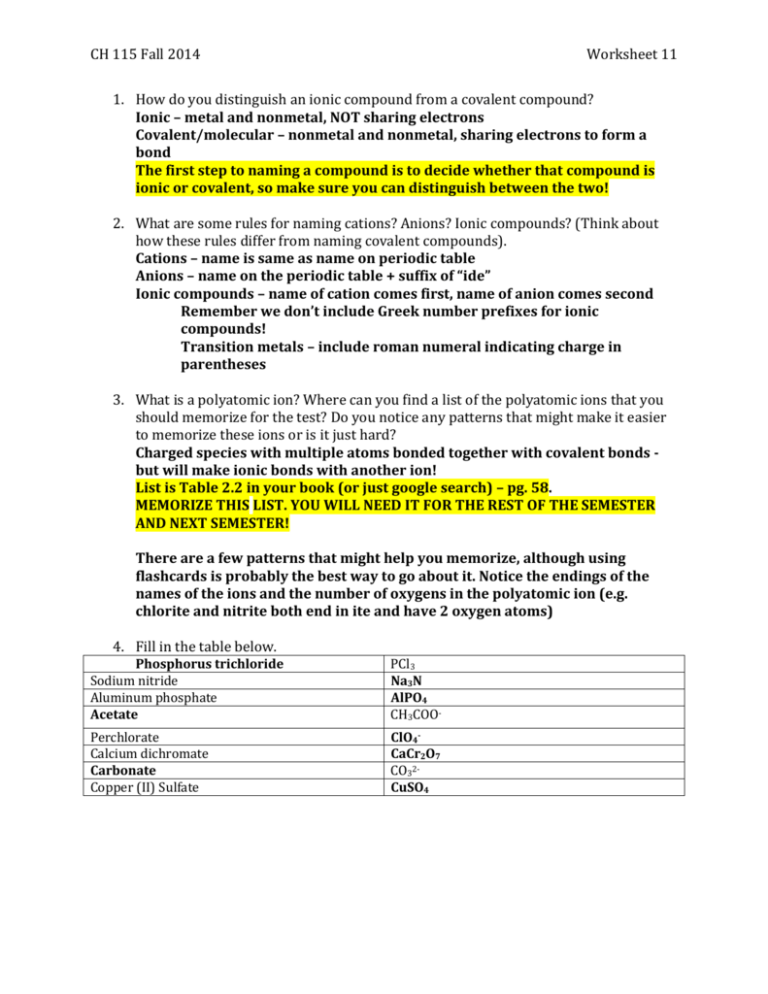
CH 115 Fall 2014 Worksheet 11 1. How do you distinguish an ionic compound from a covalent compound? Ionic – metal and nonmetal, NOT sharing electrons Covalent/molecular – nonmetal and nonmetal, sharing electrons to form a bond The first step to naming a compound is to decide whether that compound is ionic or covalent, so make sure you can distinguish between the two! 2. What are some rules for naming cations? Anions? Ionic compounds? (Think about how these rules differ from naming covalent compounds). Cations – name is same as name on periodic table Anions – name on the periodic table + suffix of “ide” Ionic compounds – name of cation comes first, name of anion comes second Remember we don’t include Greek number prefixes for ionic compounds! Transition metals – include roman numeral indicating charge in parentheses 3. What is a polyatomic ion? Where can you find a list of the polyatomic ions that you should memorize for the test? Do you notice any patterns that might make it easier to memorize these ions or is it just hard? Charged species with multiple atoms bonded together with covalent bonds but will make ionic bonds with another ion! List is Table 2.2 in your book (or just google search) – pg. 58. MEMORIZE THIS LIST. YOU WILL NEED IT FOR THE REST OF THE SEMESTER AND NEXT SEMESTER! There are a few patterns that might help you memorize, although using flashcards is probably the best way to go about it. Notice the endings of the names of the ions and the number of oxygens in the polyatomic ion (e.g. chlorite and nitrite both end in ite and have 2 oxygen atoms) 4. Fill in the table below. Phosphorus trichloride Sodium nitride Aluminum phosphate Acetate PCl3 Na3N AlPO4 CH3COO- Perchlorate Calcium dichromate Carbonate Copper (II) Sulfate ClO4CaCr2O7 CO32CuSO4
